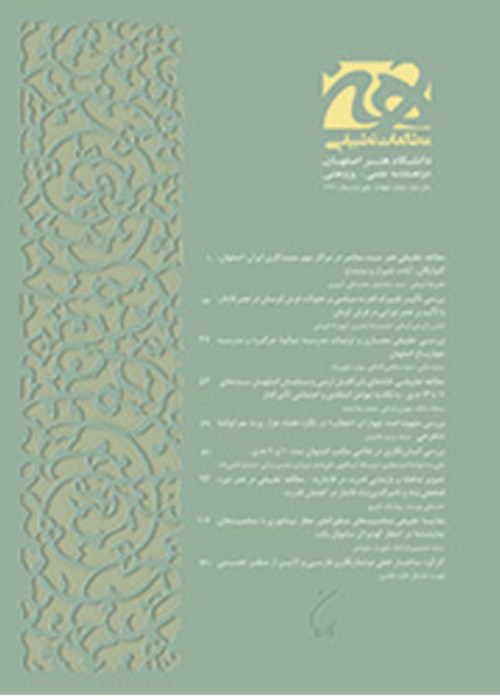The Comparative Study of Designs of Kalporegan Potteries and Baloch Needlework
Author(s):
Abstract:
The relationship between various arts of a country and their influence on each other can be a valuable subject for researchers’ investigations. Produced potteries in the Kalporegan village, located at the Saravan city, and needleworks of different regions of Sistan and Balochestan are decorated today with designs which enjoy a geometric and unique structure by emphasizing the past originality of the art of this land. These designs which are drawn by women in the two mentioned arts are an inseparable part of Baloch art. Accordingly, aiming to study the relationship between pottery designs of Kalporegan and Baloch needlework which enjoy a common cultural context, this article considers the probable points of similarity and difference between the two arts. How to make connection between the designs of Kalporegan potteries and Baloch needlework is the major question of this study. What domains are comprised by such relationship? Using historical as well as descriptive-analytic method, this research investigates comparatively the designs of the two arts of Baloch people. The information collection was done via library method, field observations and interview with senior artists. The results of this investigation show that common aspects between the designs of these arts is due to both arts’ taking inspiration from nature as well as Baloch people’s beliefs and culture. Amongst the point of similarity between the two arts are geometric designs with symbolic and abstract expression derived from nature and Baloch beliefs, simple and combined designs, similar structure in nomenclature and designs’ selection based on Balochestan natural phenomena. Also, the study of Kalporegan pottery designs and Baloch needlework specifies presence of common visual elements such as repetition, rhythm, motion, order and symmetrical combinations that will foreground the relationship between the designs of these two arts in the form of geometric figures and similar structures. Due to diversity and variety of needlework designs, through grouping the designs into simple and combined, the researchers selected the more used designs of needlework at different areas of Sistan and Balochestan and refrained from investigating similar designs.
Keywords:
designs , pottery , Kalporegan , Saravan , needlework , Baloch
Language:
Persian
Published:
Journal of Motaleate-e Tatbighi-e Honar, Volume:4 Issue: 8, 2015
Page:
31
https://magiran.com/p1384695
دانلود و مطالعه متن این مقاله با یکی از روشهای زیر امکان پذیر است:
اشتراک شخصی
با عضویت و پرداخت آنلاین حق اشتراک یکساله به مبلغ 1,390,000ريال میتوانید 70 عنوان مطلب دانلود کنید!
اشتراک سازمانی
به کتابخانه دانشگاه یا محل کار خود پیشنهاد کنید تا اشتراک سازمانی این پایگاه را برای دسترسی نامحدود همه کاربران به متن مطالب تهیه نمایند!
توجه!
- حق عضویت دریافتی صرف حمایت از نشریات عضو و نگهداری، تکمیل و توسعه مگیران میشود.
- پرداخت حق اشتراک و دانلود مقالات اجازه بازنشر آن در سایر رسانههای چاپی و دیجیتال را به کاربر نمیدهد.
In order to view content subscription is required
Personal subscription
Subscribe magiran.com for 70 € euros via PayPal and download 70 articles during a year.
Organization subscription
Please contact us to subscribe your university or library for unlimited access!


